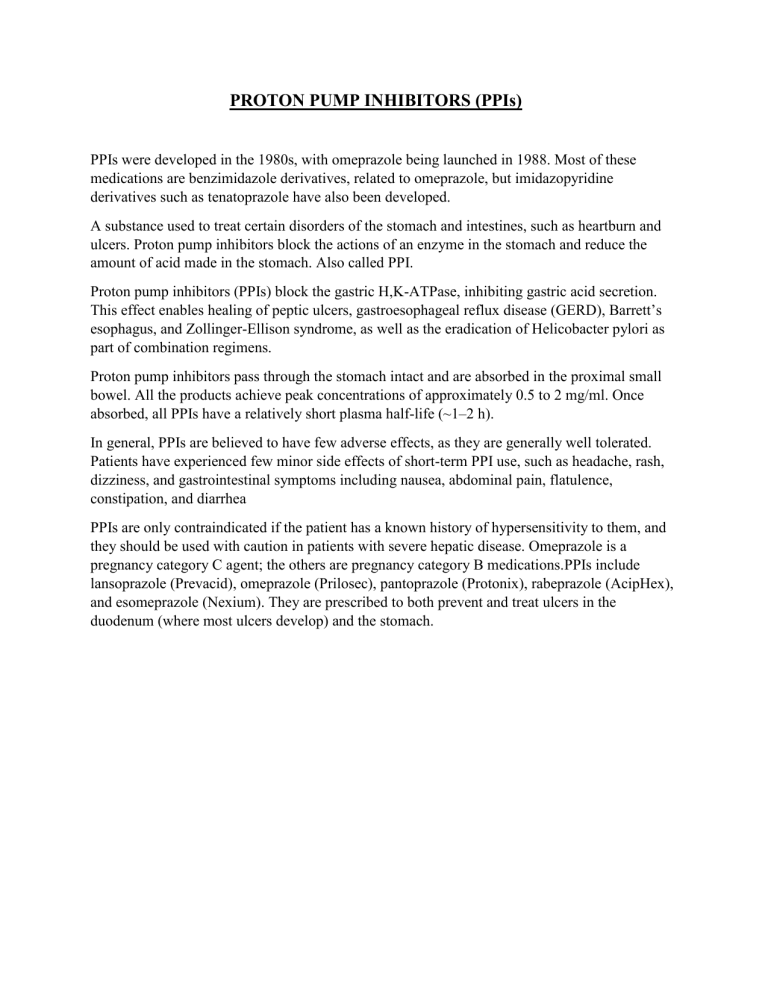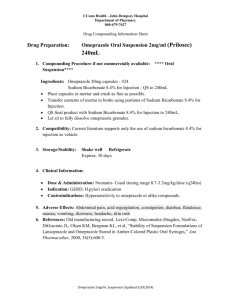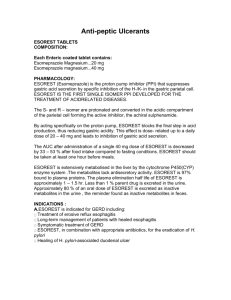
PROTON PUMP INHIBITORS (PPIs) PPIs were developed in the 1980s, with omeprazole being launched in 1988. Most of these medications are benzimidazole derivatives, related to omeprazole, but imidazopyridine derivatives such as tenatoprazole have also been developed. A substance used to treat certain disorders of the stomach and intestines, such as heartburn and ulcers. Proton pump inhibitors block the actions of an enzyme in the stomach and reduce the amount of acid made in the stomach. Also called PPI. Proton pump inhibitors (PPIs) block the gastric H,K-ATPase, inhibiting gastric acid secretion. This effect enables healing of peptic ulcers, gastroesophageal reflux disease (GERD), Barrett’s esophagus, and Zollinger-Ellison syndrome, as well as the eradication of Helicobacter pylori as part of combination regimens. Proton pump inhibitors pass through the stomach intact and are absorbed in the proximal small bowel. All the products achieve peak concentrations of approximately 0.5 to 2 mg/ml. Once absorbed, all PPIs have a relatively short plasma half-life (~1–2 h). In general, PPIs are believed to have few adverse effects, as they are generally well tolerated. Patients have experienced few minor side effects of short-term PPI use, such as headache, rash, dizziness, and gastrointestinal symptoms including nausea, abdominal pain, flatulence, constipation, and diarrhea PPIs are only contraindicated if the patient has a known history of hypersensitivity to them, and they should be used with caution in patients with severe hepatic disease. Omeprazole is a pregnancy category C agent; the others are pregnancy category B medications.PPIs include lansoprazole (Prevacid), omeprazole (Prilosec), pantoprazole (Protonix), rabeprazole (AcipHex), and esomeprazole (Nexium). They are prescribed to both prevent and treat ulcers in the duodenum (where most ulcers develop) and the stomach. OMEPRAZOLE Brand Name = Prilosec , Risek Generic Name = Omeprazole Class of drug = Proton pump inhibitors Dosage form and strength : Omeprazole delayed release capsules (10 mg,20 mg,40 mg) Omeprazole granules for oral ssuspension (2.5 mg,10 mg) Omeprazole tablets (20 mg) Mechanism of action : It suppresses stomach acid secretion by specific inhibition of the H+/K+ATPase system found at the secretory surface of gastric parietal cells. Because this enzyme system is regarded as the acid (proton, or H+) pump within the gastric mucosa, omeprazole inhibits the final step of acid production. Pharmacokinetics : Omeprazole is completely metabolized in the liver. The two major plasma metabolites are the sulphone and hydroxyomeprazole, neither of which contributes to the antisecretory activity. About 80% of a given dose is excreted in the urine, and the remainder via the bile. Indications : Omeprazole is used to treat certain conditions where there is too much acid in the stomach. It is used to treat gastric and duodenal ulcers, erosive esophagitis, and gastroesophageal reflux disease (GERD). GERD is a condition where the acid in the stomach washes back up into the esophagus. Adverse effects : Headaches Feeling sick (nausea) Being sick (vomiting) or diarrhoea or constipation Stomach pain Farting (flatulence) Contraindications : Diarrhea from an infection with Clostridium difficile bacteria Inadequate vitamin B12 Low amount of magnesium in the blood Liver problems A type of kidney inflammation called interstitial nephritis Subacute cutaneous lupus erythematosus Systemic lupus erythematosus, an autoimmune disease Osteoporosis, a condition of weak bones or a broken bone CYP2C19 poor metabolizer






